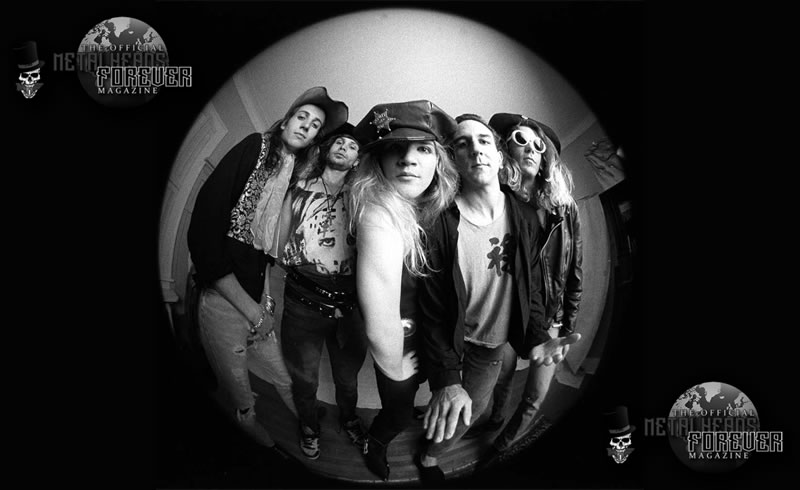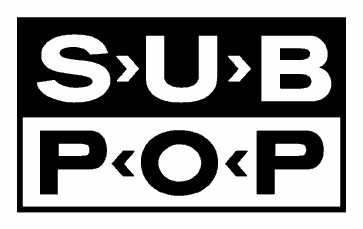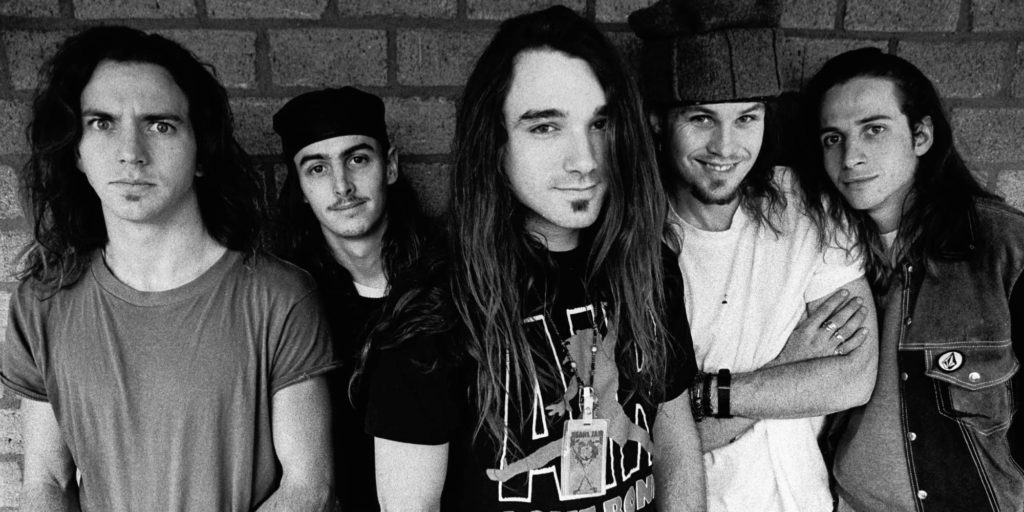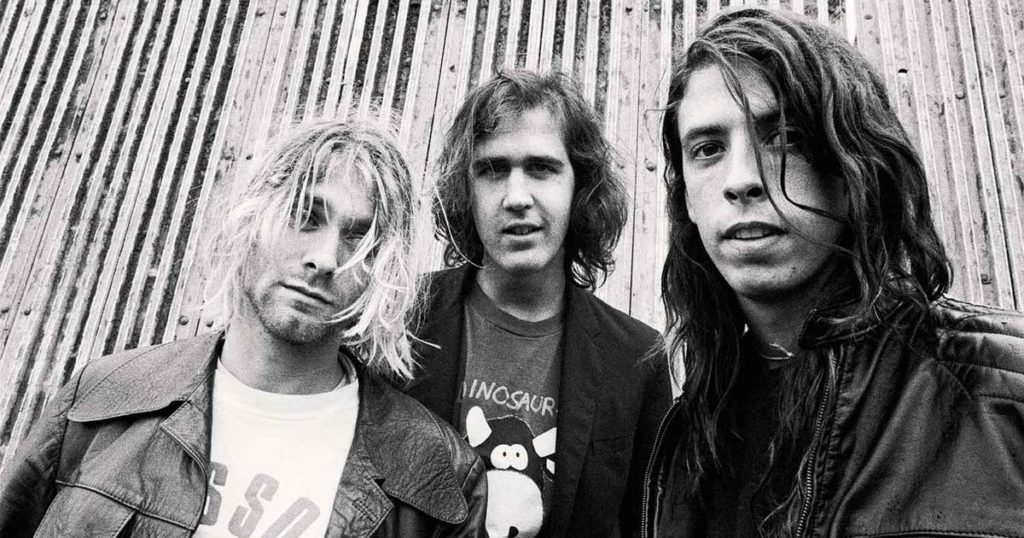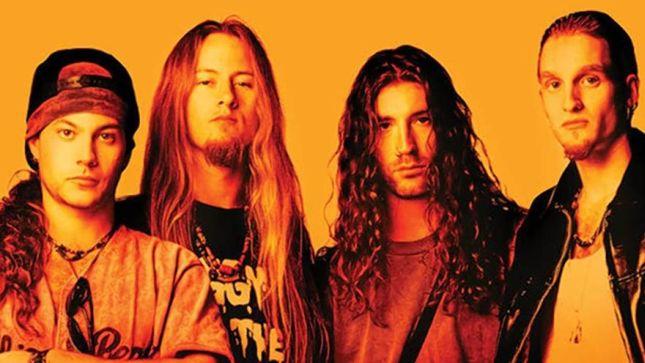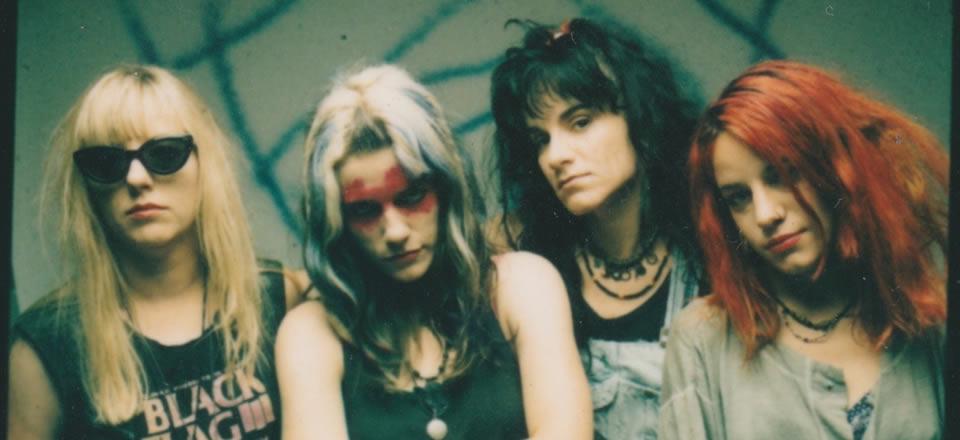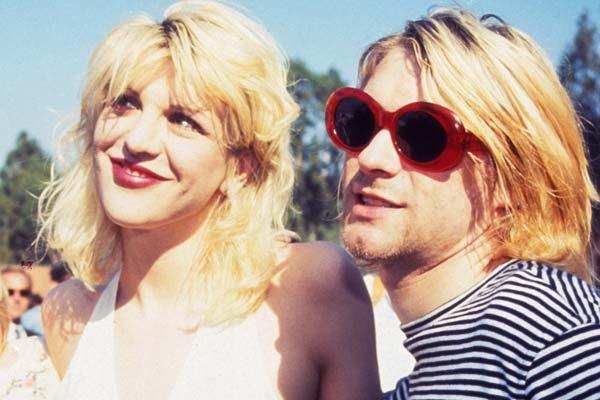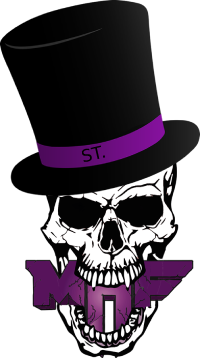“Sounds Like Seattle” by Adam McCann
“Part One: The story of how Seattle became the epicentre of an entire movement”
In 1991, the pressure of the tectonic plates of the north-west that had been grinding against each other throughout the 1980’s gave way creating an earthquake that would be felt worldwide. This earthquake was affectionately named grunge by the media and the fans and would blow a hole in the music scene the likes hadn’t been seen since the explosion of punk in the mid 1970’s. Grunge devastated almost everything in its wake and it was over as quickly as it arrived, yet the collateral damage can still be seen today. Whatever side of the fence you sat on with grunge, it cannot be denied the legacy that it left and how it placed Seattle firmly on the map as the Mecca of alternative music.
Let’s take a step into the MHF time machine and set the dials for the United States of America, 1980. The Cold War is continuing to rage on and in power is President Jimmy Carter, the USA is experiencing a recession and inflation is on the rise, but hey, crack out the blazers and roll them sleeves up because well, you want to blend in right? But, enough of politics and fashion, what of music?
The big cities was where you wanted to be, New York and Detroit had become centres for funk and disco with plenty of rock bands chancing at this burgeoning sound; Kiss and Blondie even scoring hits in 1979 with the disco-tinged I Was Made for Lovin’ You and Heart of Glass. As well as disco, New York was still a heavy scene for punk and new wave with established bands like The Dead Boys and The Ramones playing alongside more up and coming bands such as Television and Talking Heads. Elsewhere, bands like Styx, Journey, Foreigner and ZZ Top were selling albums by the pallet load and were off somewhere in the stratosphere of the American skyline. Across the country on the west coast, Los Angeles was beginning to single handedly destroy the ozone layer with its haze of hairspray as bands like Mötley Crüe and Ratt began to gear themselves up for stardom, following in the footsteps of Van Halen as they continued to hump their way across the globe.
Take the road north out of L.A. and continue up the coast to the north-west state of Washington and life up here is completely different, this was logging country. Compared to many of their 49 other counterparts, Washington was poor with many of its inhabitants wearing checked shirts, plaid and gingham flannel, thrift store jeans that were repaired rather than bought new. This waste not, want not attitude transposed easily into Washington’s culture with hand-me-down instruments from a relative or picked up from a pawn store which gave a unique take on the music from this area and it congregated into one area; the city of Seattle.
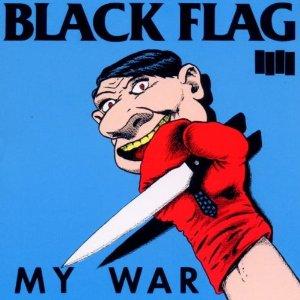 Seattle was no stranger to the music scene, it was the birthplace of influential guitar legend Jimi Hendrix and Heart, who by 1980 had hits such as Crazy On You and Barracuda under their belt. It wasn’t just Seattle bands that inspired this area though, Black Sabbath’s melancholy semitones suited the Evergreen State down to the ground and their sound would be seen emanating from the likes of The Melvins within a few years. The raw proto-punk energy of The Stooges and MC5 would also play their part in this movement, as well as what would be seen as one of the most influential bands on the alternative era; The Replacements, as Paul Westerbergs scratching raw throat would provide the perfect backdrop to his exceptionally personal lyrics. Washington would also look to Oregon, the next State over for local punk band; The Wipers. The Wipers had that uptempo beat of The Ramones with a touch of Talking Heads style avant-garde and Kurt Cobain would state throughout his career that The Wipers were a huge influence on Nirvana’s sound. However, it was the arrival of hardcore punk into the mix which really got things going. By 1981, punk had undergone a sort of metamorphosis, if new wave had watered down the sound of punk, then hardcore punk was about to make it violent and politically active again. Black Flag released their debut album; Damaged in 1981 changing the landscape of punk forever, but it was their 1984 album; My War appealed to the Pacific north-west the most. My War blended the fast violent rhythms of hardcore punk with the slow grind of Black Sabbath and the Seattle area lapped this up, they took it into their stride.
Seattle was no stranger to the music scene, it was the birthplace of influential guitar legend Jimi Hendrix and Heart, who by 1980 had hits such as Crazy On You and Barracuda under their belt. It wasn’t just Seattle bands that inspired this area though, Black Sabbath’s melancholy semitones suited the Evergreen State down to the ground and their sound would be seen emanating from the likes of The Melvins within a few years. The raw proto-punk energy of The Stooges and MC5 would also play their part in this movement, as well as what would be seen as one of the most influential bands on the alternative era; The Replacements, as Paul Westerbergs scratching raw throat would provide the perfect backdrop to his exceptionally personal lyrics. Washington would also look to Oregon, the next State over for local punk band; The Wipers. The Wipers had that uptempo beat of The Ramones with a touch of Talking Heads style avant-garde and Kurt Cobain would state throughout his career that The Wipers were a huge influence on Nirvana’s sound. However, it was the arrival of hardcore punk into the mix which really got things going. By 1981, punk had undergone a sort of metamorphosis, if new wave had watered down the sound of punk, then hardcore punk was about to make it violent and politically active again. Black Flag released their debut album; Damaged in 1981 changing the landscape of punk forever, but it was their 1984 album; My War appealed to the Pacific north-west the most. My War blended the fast violent rhythms of hardcore punk with the slow grind of Black Sabbath and the Seattle area lapped this up, they took it into their stride.
Budding musicians of Washington had eyes all over the place, taking influences from quick melodic songs that were dripping with hooks from the likes of The Beatles and Creedence Clearwater Revival, to bands that prided themselves on having no real structure. Bands like Sonic Youth would influence Seattle from New York with their rejection of convention and piercing feedback and noise as well Texas’ Butthole Surfers. Other bands would also add their sounds into the Seattle melting pot, Pixies would add the quiet verse/loud chorus approach, Dinosaur Jr. and Hüsker Dü would smash the boundaries of pigeon holing themselves into one genre by not only filling albums with songs of different styles, bridging multiple genres. Meat Puppets defied convention by deliberately singing out of key on their seminal II release, whilst Flipper took a more psychedelic approach with the extended noise interludes that would fill their 1982 Generic album. However, it was local Seattle band; The U-Men that can be credited with smelting down punk and heavy metal into a liquid plasma that would form the basis of the Seattle sound.
Although Mark Arm of Mudhoney is often credited with coining the term grunge, Arm was misquoted, when writing to the music zine of Seattle, Desperate Times, Arm used the term grunge adjectively referring to the state of Seattle at the time and Arm has spent most of his career attempting to rectify this misquotation stating on several occasions that grunge was used to describe alternative bands from Australia such as Beasts of Bourbon, King Snake Roost, The Scientists and X in the early to mid-1980’s. The origin of the term grunge does indeed go further back in time, Rolling Stone journalist; Lester Bangs used the term in 1972 whilst rockabilly legend; Johnny Burnette featured the word on his 1957 album; Rock N’ Roll Trio. The media initially called this burgeoning noise, the ‘Seattle Sound’ or ‘Seattle Scene’ before cottoning onto the term grunge. However, many of the bands from this era have consciously and actively distanced themselves from the connotations of grunge, Eddie Vedder, Mark Arm and Ben Shepherd have all spoken out against the term grunge and the negativity that has become associated with it.
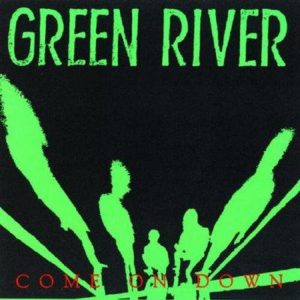 In this respect, Seattle was not unique. Worldwide, many cities had growing underground music scenes, but what was about to happen in Seattle would lay the foundations for an underground music to begin reaching for the surface. 1985 saw the release of Come on Down, the first EP from Green River and is generally regarded as the first release to feature the stereotypical Seattle sound. This release can be considered to be the primordial soup of the Pacific North West; Green River’s members included Stone Gossard and Jeff Ament who would go on to found Mother Love Bone and achieve fame with Pearl Jam. Come on Down also featured Mark Arm and Steve Turner who would also later go on to found Mudhoney. However, it was the release of the now cult release of the Deep Six compilation headed by Chris Hanzsek of C/Z Records. The Deep Six compilation showcased the Seattle Sound and helped provide a pedestal with spotlight on six of the most popular bands from the area. Deep Six contained tracks from Green River and The U-Men, but also featured the sludge of the Melvins, complete with the groan of Buzz Osborne. But, Deep Six would also show Malfunkshun, which contained the unique and charismatic phrasings of Andrew Wood, who would later join Ament and Gossard in Mother Love Bone, as well as exhibiting tracks from Skin Yard which featured legendary producer Jack Endino as well as stalwart alternative drummer; Matt Cameron, would go on to join Soundgarden, who also introduced listeners to their brand of Seattle sound with heavy metal leanings and unconventional noise on Deep Six.
In this respect, Seattle was not unique. Worldwide, many cities had growing underground music scenes, but what was about to happen in Seattle would lay the foundations for an underground music to begin reaching for the surface. 1985 saw the release of Come on Down, the first EP from Green River and is generally regarded as the first release to feature the stereotypical Seattle sound. This release can be considered to be the primordial soup of the Pacific North West; Green River’s members included Stone Gossard and Jeff Ament who would go on to found Mother Love Bone and achieve fame with Pearl Jam. Come on Down also featured Mark Arm and Steve Turner who would also later go on to found Mudhoney. However, it was the release of the now cult release of the Deep Six compilation headed by Chris Hanzsek of C/Z Records. The Deep Six compilation showcased the Seattle Sound and helped provide a pedestal with spotlight on six of the most popular bands from the area. Deep Six contained tracks from Green River and The U-Men, but also featured the sludge of the Melvins, complete with the groan of Buzz Osborne. But, Deep Six would also show Malfunkshun, which contained the unique and charismatic phrasings of Andrew Wood, who would later join Ament and Gossard in Mother Love Bone, as well as exhibiting tracks from Skin Yard which featured legendary producer Jack Endino as well as stalwart alternative drummer; Matt Cameron, would go on to join Soundgarden, who also introduced listeners to their brand of Seattle sound with heavy metal leanings and unconventional noise on Deep Six.
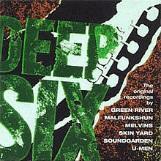 The music that was featured on the Deep Six compilation had all the angst and aggression of hardcore punk, yet it the grind, complexity and sludge of heavy metal, but it was the vision and ingenuity of Bruce Pavitt that really set the ball rolling. Pavitt, a DJ, radio broadcaster and editor in 1986 expanded on his monthly column in the magazine, The Rocket, aptly named Sub Pop into the realm of a recording label. Pavitt’s first port of call in ’86 was to further the cause laid out by Deep Six by releasing the now rare Sub Pop 100 compilation and featured the likes of the Wipers, Sonic Youth, Skinny Puppy as well as the ever familiar U-Men. As well as the Sub Pop 100, Pavitt also oversaw the release of the second EP by Green River; Dry as a Bone in 1987 aided by the stylistic visions of Jeff Ament and Sub Pop photographer; Charles Peterson who between them created a mirage that shows in the Pacific North West were heavily attended, this coupled with Sub Pop, Alchemy, C/Z, Velvetone and Boner Records picking up bands all helped weave the illusion of the ‘next big thing’ and by 1988, the world’s gaze slowly began to turn towards Seattle.
The music that was featured on the Deep Six compilation had all the angst and aggression of hardcore punk, yet it the grind, complexity and sludge of heavy metal, but it was the vision and ingenuity of Bruce Pavitt that really set the ball rolling. Pavitt, a DJ, radio broadcaster and editor in 1986 expanded on his monthly column in the magazine, The Rocket, aptly named Sub Pop into the realm of a recording label. Pavitt’s first port of call in ’86 was to further the cause laid out by Deep Six by releasing the now rare Sub Pop 100 compilation and featured the likes of the Wipers, Sonic Youth, Skinny Puppy as well as the ever familiar U-Men. As well as the Sub Pop 100, Pavitt also oversaw the release of the second EP by Green River; Dry as a Bone in 1987 aided by the stylistic visions of Jeff Ament and Sub Pop photographer; Charles Peterson who between them created a mirage that shows in the Pacific North West were heavily attended, this coupled with Sub Pop, Alchemy, C/Z, Velvetone and Boner Records picking up bands all helped weave the illusion of the ‘next big thing’ and by 1988, the world’s gaze slowly began to turn towards Seattle.
By the mid-to-late 80’s, the bands that had been riding the popularity of the underground were now signed to small independent labels as the bands pushed beyond releasing demos and EP’s and towards full length albums. Screaming Trees had released their debut album; Clairvoyance in 1986 on the independent Velvetone Records and the 1960’s garage/psychedelic alternative tones that oozed from this record caught the ears of larger independent label SST Records who had also recently acquired Bad Brains, Dinosaur Jr. and Sonic Youth into their ranks. Melvins, another band that had been sludgily grinding along since 1983 released their debut album; Gluey Porch Treatments in 1987. Following the success of their Six Songs EP released the year previously, Melvins followed this up with a monster of an album that although wasn’t commercially successful, was highly influential and would lay down the foundations of sludge for years to come.
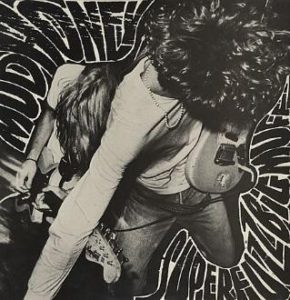 By 1988, Sub Pop were becoming the label to sign and be associated with. Soundgarden released two EP’s with Sub Pop; Screaming Life in 1987 and Fopp in 1988 before the SST Records came calling with Soundgarden releasing their take on heavy metal fused with unconventional noise; Ultramega OK in the same year and a little known band called Nirvana also released their debut single, a cover of Love Buzz by Dutch psychedelic band, Shocking Blue. Sadly, by this point, Green River had decided to split up and go their separate ways. However, Green River agreed to finish and release their long awaited debut album; Rehab Doll in this year. If the dissolution of Green River – Sub Pop’s flagship band, at the time seemed like a death knell, then they were wrong. By October 1988, Arm and Turner had formed Mudhoney and released their debut EP; Superfuzz Bigmuff. Although Superfuzz Bigmuff was initially a commercial flop, it has since gone on to be seen as one of the seminal releases of the Seattle era. Although, by this time, Green River were not the only casualty of the Seattle scene, Malfunkshun had also gone into hiatus due to ongoing internal problems, The U-Men had disbanded into other bands, the most famous of which being Love Battery who would feature future Mudhoney drummer; Dan Peters. Skin Yard would limp along for a few more years, after losing Matt Cameron to Soundgarden in 1986, Ben McMillan and Scott McCullum would go on to form Gruntruck, whilst Jack Endino would have a successful career as a producer, most notably working with Nirvana, Soundgarden and Mudhoney.
By 1988, Sub Pop were becoming the label to sign and be associated with. Soundgarden released two EP’s with Sub Pop; Screaming Life in 1987 and Fopp in 1988 before the SST Records came calling with Soundgarden releasing their take on heavy metal fused with unconventional noise; Ultramega OK in the same year and a little known band called Nirvana also released their debut single, a cover of Love Buzz by Dutch psychedelic band, Shocking Blue. Sadly, by this point, Green River had decided to split up and go their separate ways. However, Green River agreed to finish and release their long awaited debut album; Rehab Doll in this year. If the dissolution of Green River – Sub Pop’s flagship band, at the time seemed like a death knell, then they were wrong. By October 1988, Arm and Turner had formed Mudhoney and released their debut EP; Superfuzz Bigmuff. Although Superfuzz Bigmuff was initially a commercial flop, it has since gone on to be seen as one of the seminal releases of the Seattle era. Although, by this time, Green River were not the only casualty of the Seattle scene, Malfunkshun had also gone into hiatus due to ongoing internal problems, The U-Men had disbanded into other bands, the most famous of which being Love Battery who would feature future Mudhoney drummer; Dan Peters. Skin Yard would limp along for a few more years, after losing Matt Cameron to Soundgarden in 1986, Ben McMillan and Scott McCullum would go on to form Gruntruck, whilst Jack Endino would have a successful career as a producer, most notably working with Nirvana, Soundgarden and Mudhoney.
 With the decline of Malfunkshun and Green River came an opportunity. Arm and Turner may have struck first with Mudhoney, but Jeff Ament, Stone Gossard and Bruce Fairweather bided their time for something a little bigger, they joined with Andrew Wood and Greg Gilmore, known for his work with Skin Yard and Ten Minute Warning and formed Mother Love Bone. It is a common misconception that the Seattle scene vehemently hated the glam over-the-top metal scene of L.A., this would mainly portrayed by the media in a couple years time, as well as a few interviews of ‘playing up’ to the camera from the likes of Cobain and Vedder. Mother Love Bone and Alice in Chains would challenge themselves to melding the accessibility of the glam scene in the with grass roots of Seattle – a roll that was revelled in by Wood, he had the voice, the songs and boyish good looks of a loveable rogue and this would pay off when Mother Love Bone signed a major label deal with Mercury Records in 1988 being the first Seattle band to release an EP on a major label with their debut EP; Shine in 1989.
With the decline of Malfunkshun and Green River came an opportunity. Arm and Turner may have struck first with Mudhoney, but Jeff Ament, Stone Gossard and Bruce Fairweather bided their time for something a little bigger, they joined with Andrew Wood and Greg Gilmore, known for his work with Skin Yard and Ten Minute Warning and formed Mother Love Bone. It is a common misconception that the Seattle scene vehemently hated the glam over-the-top metal scene of L.A., this would mainly portrayed by the media in a couple years time, as well as a few interviews of ‘playing up’ to the camera from the likes of Cobain and Vedder. Mother Love Bone and Alice in Chains would challenge themselves to melding the accessibility of the glam scene in the with grass roots of Seattle – a roll that was revelled in by Wood, he had the voice, the songs and boyish good looks of a loveable rogue and this would pay off when Mother Love Bone signed a major label deal with Mercury Records in 1988 being the first Seattle band to release an EP on a major label with their debut EP; Shine in 1989.
 1989 also saw Nirvana record and release their debut album Bleach with Endino at the helm. Bleach was heavy and raw, it was fast and punky like Mudhoney, but also in parts, slow, brooding and groovy like the Melvins. Cobain stated several times that he was heavily influenced by Superfuzz Bigmuff, Gluey Porch Treatments and their subsequent 1989 release Ozma as well as heavy European acts like Switzerland’s Celtic Frost. Although released through Sub Pop, Bleach outsold bigger acts on the label and sold steadily, causing Cobain to became frustrated with the lack of support from the label and just like many of their contemporaries, Nirvana began to search for that major label deal. In 1988 on the back of their Ultramega OK tour, Soundgarden had signed to A&M Records and in the second half of 1989, they became the first band from the Seattle scene to release a full length album with their second album, Louder Than Love. Louder Than Love moulded Black Sabbath type riffs against unconventional time signatures alongside Soundgarden’s brand of sonic noise that had made Ultramega OK so appealing. However, Louder Than Love was a huge step forward, not only production wise, but for vocalist Chris Cornell. Cornell’s raw multi-octave voice pierced through the speakers reminding listeners of a gritty Robert Plant whose lyrics were abstract, melancholic and disdainful of the world. This, coupled with the heavy, minor sludge of Kim Thayil’s unique guitar playing which drifted between full on Tony Iommi riff, to the funerary dirge of Bauhaus and Killing Joke alongside melodic John Lennon-esque interludes. This combination helped provide more exposure for the Pacific North West and as the decade ticked over the 1990, more major label deals came knocking and for Alice in Chains, Mother Love Bone, Nirvana and Soundgarden, things would never be the same again.
1989 also saw Nirvana record and release their debut album Bleach with Endino at the helm. Bleach was heavy and raw, it was fast and punky like Mudhoney, but also in parts, slow, brooding and groovy like the Melvins. Cobain stated several times that he was heavily influenced by Superfuzz Bigmuff, Gluey Porch Treatments and their subsequent 1989 release Ozma as well as heavy European acts like Switzerland’s Celtic Frost. Although released through Sub Pop, Bleach outsold bigger acts on the label and sold steadily, causing Cobain to became frustrated with the lack of support from the label and just like many of their contemporaries, Nirvana began to search for that major label deal. In 1988 on the back of their Ultramega OK tour, Soundgarden had signed to A&M Records and in the second half of 1989, they became the first band from the Seattle scene to release a full length album with their second album, Louder Than Love. Louder Than Love moulded Black Sabbath type riffs against unconventional time signatures alongside Soundgarden’s brand of sonic noise that had made Ultramega OK so appealing. However, Louder Than Love was a huge step forward, not only production wise, but for vocalist Chris Cornell. Cornell’s raw multi-octave voice pierced through the speakers reminding listeners of a gritty Robert Plant whose lyrics were abstract, melancholic and disdainful of the world. This, coupled with the heavy, minor sludge of Kim Thayil’s unique guitar playing which drifted between full on Tony Iommi riff, to the funerary dirge of Bauhaus and Killing Joke alongside melodic John Lennon-esque interludes. This combination helped provide more exposure for the Pacific North West and as the decade ticked over the 1990, more major label deals came knocking and for Alice in Chains, Mother Love Bone, Nirvana and Soundgarden, things would never be the same again.
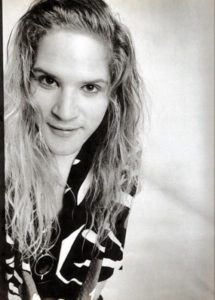 It would seem that tragedy would follow the grunge from the very off and just as the movement was about to break the big time, the Seattle scene would suffer its first big casualty. Just days before Mother Love Bone released their debut album; Apple, beautiful, charismatic frontman Andrew Wood overdosed on heroin and would pass away two days later at the age of 24 bringing Mother Love Bone to an abrupt end. Apple would still see the light of day later in the year, released in July as opposed to the original March release date. Unfortunately for Mother Love Bone, Apple was received exceptionally well and to this day, Apple is still seen as a stand-out album amongst the alternative world. On the other side of the spectrum, Alice in Chains were starting to experience success, having signed to Columbia Records in 1989, Alice in Chains released their debut album; Facelift in August 1990 with the dual vocals of Layne Staley and Jerry Cantrell offering a different edge to the music than the wail of Chris Cornell or the entrancing phrasing of Andrew Wood. Facelift would be significantly different to the rest of Alice in Chains’ career, on one hand, Facelift was dark and looming, it contained some of the monster riffs and melancholic lyrics that had already been seen with Soundgarden’s Louder Than Love, spawning the hit single; Man in the Box which saw serious rotation on MTV, but tracks like It Ain’t Like That, Sunshine and Put You Down had a touch of the glam, this saw Alice in Chains not only open for the likes of Anthrax, Megadeth and Slayer, but also saw them fit the bill with Extreme, Poison and Van Halen. Although Alice in Chains were not very well received by either side of these support slots, Facelift sold very well alongside strong sales from Louder Than Love and Apple coupled with heavy rotation from MTV, the world was starting to take note of the undercurrent coming from the north west. The blue touch paper had been lit and a new age of music was about to be ushered in to the mainstream.
It would seem that tragedy would follow the grunge from the very off and just as the movement was about to break the big time, the Seattle scene would suffer its first big casualty. Just days before Mother Love Bone released their debut album; Apple, beautiful, charismatic frontman Andrew Wood overdosed on heroin and would pass away two days later at the age of 24 bringing Mother Love Bone to an abrupt end. Apple would still see the light of day later in the year, released in July as opposed to the original March release date. Unfortunately for Mother Love Bone, Apple was received exceptionally well and to this day, Apple is still seen as a stand-out album amongst the alternative world. On the other side of the spectrum, Alice in Chains were starting to experience success, having signed to Columbia Records in 1989, Alice in Chains released their debut album; Facelift in August 1990 with the dual vocals of Layne Staley and Jerry Cantrell offering a different edge to the music than the wail of Chris Cornell or the entrancing phrasing of Andrew Wood. Facelift would be significantly different to the rest of Alice in Chains’ career, on one hand, Facelift was dark and looming, it contained some of the monster riffs and melancholic lyrics that had already been seen with Soundgarden’s Louder Than Love, spawning the hit single; Man in the Box which saw serious rotation on MTV, but tracks like It Ain’t Like That, Sunshine and Put You Down had a touch of the glam, this saw Alice in Chains not only open for the likes of Anthrax, Megadeth and Slayer, but also saw them fit the bill with Extreme, Poison and Van Halen. Although Alice in Chains were not very well received by either side of these support slots, Facelift sold very well alongside strong sales from Louder Than Love and Apple coupled with heavy rotation from MTV, the world was starting to take note of the undercurrent coming from the north west. The blue touch paper had been lit and a new age of music was about to be ushered in to the mainstream.
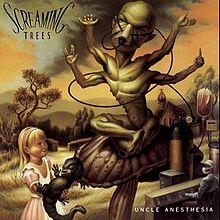 1991 would prove to be a pivotal year for grunge and for Chris Cornell, it came with a busy schedule. In 1990, Screaming Trees had signed to Epic Records releasing the EP; Something About Today and this was followed up by their major label debut Uncle Anesthesia. Uncle Anesthesia was produced by Chris Cornell alongside Terry Date, who had also worked with Cornell producing Louder Than Love as well being a veteran of the heavy metal scene, producing the likes of Overkill, Metal Church and Pantera. Although the single; Bed of Roses had some minor success, unfortunately for Screaming Trees, Uncle Anesthesia failed to make an impact and the dulcet, whiskey sodden tones of Mark Lanegan and the Screaming Trees’ 60’s style garage psychedelic grunge went underneath the radar. Following the death of Andrew Wood in 1990, Cornell had been working on material whilst on tour with Soundgarden and approached former Mother Love Bone members; Jeff Ament and Stone Gossard at the possibility of collaborating on an album as a tribute to Wood. The band in question named themselves after a line in the Mother Love Bone song, Man of Golden Words; Temple of the Dog. Not only did Temple of the Dog feature Cornell, Ament and Gossard, but also featured Soundgarden drummer; Matt Cameron and Mike McCready who was playing lead guitar for a new project that Ament and Gossard were also working on. As well as McCready, Temple of the Dog was the first time that the world would hear the soothing baritone of Eddie Vedder who performed a duet with Cornell during the lead single from Temple of the Dog; Hunger Strike. Compared to Soundgarden, Temple of the Dog was much more laid back and lyrically, it showed a different side to Cornell who proved that he could write from the heart with tracks such as Say Hello 2 Heaven and Reach Down directly addressing Andrew Wood, whilst Times of Trouble, Call Me a Dog and Wooden Jesus showed a different, bluesy and beautiful side to Cornell’s voice. However, just like Uncle Anesthesia, Temple of the Dog initially failed to chart, but with an eruption of Krakatoan scale just around the corner, Temple of the Dog was always destined to climb up the charts.
1991 would prove to be a pivotal year for grunge and for Chris Cornell, it came with a busy schedule. In 1990, Screaming Trees had signed to Epic Records releasing the EP; Something About Today and this was followed up by their major label debut Uncle Anesthesia. Uncle Anesthesia was produced by Chris Cornell alongside Terry Date, who had also worked with Cornell producing Louder Than Love as well being a veteran of the heavy metal scene, producing the likes of Overkill, Metal Church and Pantera. Although the single; Bed of Roses had some minor success, unfortunately for Screaming Trees, Uncle Anesthesia failed to make an impact and the dulcet, whiskey sodden tones of Mark Lanegan and the Screaming Trees’ 60’s style garage psychedelic grunge went underneath the radar. Following the death of Andrew Wood in 1990, Cornell had been working on material whilst on tour with Soundgarden and approached former Mother Love Bone members; Jeff Ament and Stone Gossard at the possibility of collaborating on an album as a tribute to Wood. The band in question named themselves after a line in the Mother Love Bone song, Man of Golden Words; Temple of the Dog. Not only did Temple of the Dog feature Cornell, Ament and Gossard, but also featured Soundgarden drummer; Matt Cameron and Mike McCready who was playing lead guitar for a new project that Ament and Gossard were also working on. As well as McCready, Temple of the Dog was the first time that the world would hear the soothing baritone of Eddie Vedder who performed a duet with Cornell during the lead single from Temple of the Dog; Hunger Strike. Compared to Soundgarden, Temple of the Dog was much more laid back and lyrically, it showed a different side to Cornell who proved that he could write from the heart with tracks such as Say Hello 2 Heaven and Reach Down directly addressing Andrew Wood, whilst Times of Trouble, Call Me a Dog and Wooden Jesus showed a different, bluesy and beautiful side to Cornell’s voice. However, just like Uncle Anesthesia, Temple of the Dog initially failed to chart, but with an eruption of Krakatoan scale just around the corner, Temple of the Dog was always destined to climb up the charts.
As well as working with Temple of the Dog, each member had been busy beavering away outside of the Temple of the Dog bubble, Jeff Ament and Stone Gossard’s new project was none other than Pearl Jam. J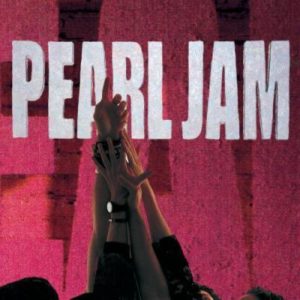 oined by melodic Hendrix style solos of Mike McCready and the angst ridden baritone of the unique Eddie Vedder alongside the rhythmic, almost tribal drumming of Dave Krusen, Pearl Jam expanded on the legato grooves laid down by Temple of the Dog and Mother Love Bone, creating a sound that when coupled with Vedder’s baritone vibrato and heart on the sleeve lyrics brought through a different sound from the Pacific North West; that sound wasn’t raw and punky like Nirvana or heavy and grinding like Soundgarden and Alice in Chains. Pearl Jam had a real throwback appeal from a different era, it melded 60’s melody with the Led Zeppelin style grooves of the 70’s and the band were soon picked up by Epic Records in 1990. At this time, Pearl Jam were known as Mookie Blaylock after the NBA player of the same name, however, after being forced to change their name to Pearl Jam, the band members decided to honour Blaylock by naming their debut album Ten; the number of Blaylock’s basketball jersey. Released on the 27th August 1991, Ten became a slow burner, selling steadily throughout the remainder of 1991, but by 1992, Ten would skyrocket Pearl Jam into the stratosphere alongside extremely heavy rotation from MTV with a live music video for Even Flow, a faux live video for Alive and the artsy Jeremy, the latter of which focused on Vedder whose angry, mad eyes and unique vocal delivery catapulted him as a poster boy for this huge new movement.
oined by melodic Hendrix style solos of Mike McCready and the angst ridden baritone of the unique Eddie Vedder alongside the rhythmic, almost tribal drumming of Dave Krusen, Pearl Jam expanded on the legato grooves laid down by Temple of the Dog and Mother Love Bone, creating a sound that when coupled with Vedder’s baritone vibrato and heart on the sleeve lyrics brought through a different sound from the Pacific North West; that sound wasn’t raw and punky like Nirvana or heavy and grinding like Soundgarden and Alice in Chains. Pearl Jam had a real throwback appeal from a different era, it melded 60’s melody with the Led Zeppelin style grooves of the 70’s and the band were soon picked up by Epic Records in 1990. At this time, Pearl Jam were known as Mookie Blaylock after the NBA player of the same name, however, after being forced to change their name to Pearl Jam, the band members decided to honour Blaylock by naming their debut album Ten; the number of Blaylock’s basketball jersey. Released on the 27th August 1991, Ten became a slow burner, selling steadily throughout the remainder of 1991, but by 1992, Ten would skyrocket Pearl Jam into the stratosphere alongside extremely heavy rotation from MTV with a live music video for Even Flow, a faux live video for Alive and the artsy Jeremy, the latter of which focused on Vedder whose angry, mad eyes and unique vocal delivery catapulted him as a poster boy for this huge new movement.
The guys from Pearl Jam were not the only ones from Temple of the Dog to be busy during this period. Chris Cornell and Matt Cameron would return to Soundgarden to work on their 3rd album; Badmotorfinger, this time there would be an absence of Hiro Yamamoto and Jason Everman who had left Soundgarden and were replaced by new bassist, Ben Shepherd. 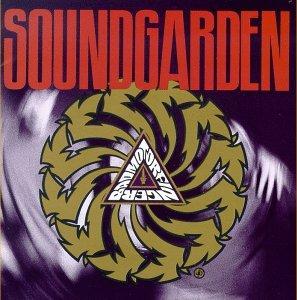 Badmotorfinger is where it all changed for Soundgarden, in parallel to Ultramega OK and Louder Than Love, Badmotorfinger was still heavy and painted with Cornell’s abstract lyrics, however, the contrast was now that Soundgarden was much more focused, the song writing had improved tenfold and whilst there were still the odd time signatures used particularly in Rusty Cage and Jesus Christ Pose and the alternatively downtuned guitars such as Mind Riot and Searching With my Good Eye Closed, Badmotorfinger took a huge step away from the avant-garde noise and wall of sound approach that drenched their previous two albums. The inclusion of Shepherd helped hone the Soundgarden sound and coupled with Cameron’s ability to hammer along to non-conventional time signatures with Kim Thayil’s rapid fire, piercing guitar all helped to mould the band into creating weird songs that had commercial appeal. But just like Pearl Jam, Soundgarden’s talisman came in the shape of Chris Cornell and without the wall of sound drowning him out, Cornell’s voice became the forefront, his multi octave voice showing that Cornell was one of the best voices of the last 25 years, easily keeping up with his heavy metal peers during tracks like Slaves & Bulldozers, Face Pollution and Rusty Cage. Little than a month would pass from the release of Ten before Badmotorfinger would be released what would be the D-Day for grunge – the 24th September 1991 and not only did Soundgarden have the songs, they had the frontman and just like Eddie Vedder, Cornell would be at the forefront of the grunge movement as a figurehead, a topless, toned bronzed body would be lapped up by the MTV generation with music videos for Outshined and Jesus Christ Pose, the latter of which would be a centre of controversy due to the imagery used in the music video. Soundgarden would also be opened up to a whole new audience by being the opening act in Europe and North America for Guns N’ Roses on their Use Your Illusion tour causing Badmotorfinger to sell steadily throughout the remainder of 1991.
Badmotorfinger is where it all changed for Soundgarden, in parallel to Ultramega OK and Louder Than Love, Badmotorfinger was still heavy and painted with Cornell’s abstract lyrics, however, the contrast was now that Soundgarden was much more focused, the song writing had improved tenfold and whilst there were still the odd time signatures used particularly in Rusty Cage and Jesus Christ Pose and the alternatively downtuned guitars such as Mind Riot and Searching With my Good Eye Closed, Badmotorfinger took a huge step away from the avant-garde noise and wall of sound approach that drenched their previous two albums. The inclusion of Shepherd helped hone the Soundgarden sound and coupled with Cameron’s ability to hammer along to non-conventional time signatures with Kim Thayil’s rapid fire, piercing guitar all helped to mould the band into creating weird songs that had commercial appeal. But just like Pearl Jam, Soundgarden’s talisman came in the shape of Chris Cornell and without the wall of sound drowning him out, Cornell’s voice became the forefront, his multi octave voice showing that Cornell was one of the best voices of the last 25 years, easily keeping up with his heavy metal peers during tracks like Slaves & Bulldozers, Face Pollution and Rusty Cage. Little than a month would pass from the release of Ten before Badmotorfinger would be released what would be the D-Day for grunge – the 24th September 1991 and not only did Soundgarden have the songs, they had the frontman and just like Eddie Vedder, Cornell would be at the forefront of the grunge movement as a figurehead, a topless, toned bronzed body would be lapped up by the MTV generation with music videos for Outshined and Jesus Christ Pose, the latter of which would be a centre of controversy due to the imagery used in the music video. Soundgarden would also be opened up to a whole new audience by being the opening act in Europe and North America for Guns N’ Roses on their Use Your Illusion tour causing Badmotorfinger to sell steadily throughout the remainder of 1991.
1990 had also proved to be a busy year for Nirvana; having spent time touring for Bleach, Nirvana had parted ways with drummer Chad Channing with Melvins drummer Dale Crover temporarily filling the drum stool before settling on D.C. hardcore punk drummer Dave Grohl. 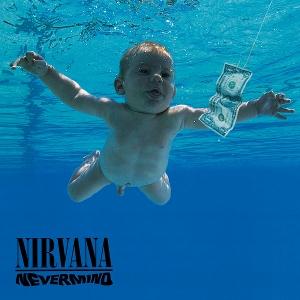 Grohl added that final dimension to Nirvana’s punk sound, Grohl had a style that was distinctly Dave Grohl, nobody else sounded like that and when joined with Krist Novoselic’s simple, yet effective basslines, Kurt Cobain’s muddy distorted guitar and scratchy angst-ridden voice, it took what Mudhoney had set out to accomplish and attached a catalyst to it. Major labels were snatching up the alternative bands of Seattle and Nirvana was no exception, by 1990, on the recommendation of Kim Gordon of Sonic Youth, Nirvana signed to Geffen Records and working with producer Butch Vig they began work on their follow up to Bleach, Vig would go on to work with L7 on Bricks Are Heavy and the Smashing Pumpkins with Siamese Dream. That follow up was the ground breaking Nevermind, released on the same day as Badmotorfinger, Nevermind began to sell well on the back of the first single; Smells Like Teen Spirit. Generation X now had an anthem and an icon to follow, Kurt Cobain with his shaggy blond hair, deep watery blue eyes and punk as fuck demeanour appealed to both men and women alike and by the end of the year Nirvana fever was in full pandemic. The alternative fire that had been raging from Washington was now doused in gasoline and burning out of control and Nirvana followed Smells Like Teen Spirit with 3 other huge singles in the shape of Come As You Are, Lithium and In Bloom in 1992. These songs were accompanied with iconic music videos which garnered massive airplay on MTV, as Nirvana quickly became the darlings of the 90’s music video fighting for the top spot alongside Pearl Jam, Guns N’ Roses, Soundgarden, Metallica and Aerosmith. Nevermind tore a hole in the musical world as we know it and debatably, this is still felt today, however, by this point, not just the musical world, but the entire world, shifted its focus to Seattle and alongside Nevermind, Ten and Badmotorfinger’s sales sold ten-fold as well as an increase in sales for Alice in Chains, Mudhoney and Screaming Trees.
Grohl added that final dimension to Nirvana’s punk sound, Grohl had a style that was distinctly Dave Grohl, nobody else sounded like that and when joined with Krist Novoselic’s simple, yet effective basslines, Kurt Cobain’s muddy distorted guitar and scratchy angst-ridden voice, it took what Mudhoney had set out to accomplish and attached a catalyst to it. Major labels were snatching up the alternative bands of Seattle and Nirvana was no exception, by 1990, on the recommendation of Kim Gordon of Sonic Youth, Nirvana signed to Geffen Records and working with producer Butch Vig they began work on their follow up to Bleach, Vig would go on to work with L7 on Bricks Are Heavy and the Smashing Pumpkins with Siamese Dream. That follow up was the ground breaking Nevermind, released on the same day as Badmotorfinger, Nevermind began to sell well on the back of the first single; Smells Like Teen Spirit. Generation X now had an anthem and an icon to follow, Kurt Cobain with his shaggy blond hair, deep watery blue eyes and punk as fuck demeanour appealed to both men and women alike and by the end of the year Nirvana fever was in full pandemic. The alternative fire that had been raging from Washington was now doused in gasoline and burning out of control and Nirvana followed Smells Like Teen Spirit with 3 other huge singles in the shape of Come As You Are, Lithium and In Bloom in 1992. These songs were accompanied with iconic music videos which garnered massive airplay on MTV, as Nirvana quickly became the darlings of the 90’s music video fighting for the top spot alongside Pearl Jam, Guns N’ Roses, Soundgarden, Metallica and Aerosmith. Nevermind tore a hole in the musical world as we know it and debatably, this is still felt today, however, by this point, not just the musical world, but the entire world, shifted its focus to Seattle and alongside Nevermind, Ten and Badmotorfinger’s sales sold ten-fold as well as an increase in sales for Alice in Chains, Mudhoney and Screaming Trees.
If Nirvana, Pearl Jam and Soundgarden fired first in 1991, 1992 would be reserved for Alice in Chains. Entering the studio in late 1991, Alice in Chains kicked off 1992 with Sap, an acoustic EP which featured fellow Washington musician, Ann Wilson of Heart during Brother and Am I Inside, whilst other cameo appearances from Chris Cornell and Mark Arm combined forces on Right Turn and credited the song is Alice Mudgarden. 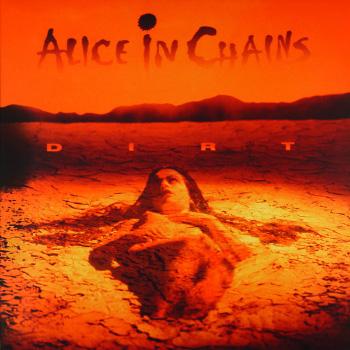 This act alone showed the world that there was a sense of community amongst the alternative bands of Seattle and that this movement had a sense of belonging, outcasts, stoners and misfits now had a musical homeland they could attach themselves to and be part of without being judged and on the back of 1991’s mega releases, Sap sold very well. But, it was that sense of underdog, isolationism and self- depreciation that made the grunge movement so appealing to so many. Alice in Chains followed Sap quickly with their second album; Dirt. As a band, Alice in Chains were never afraid to allude to the darker side of life and unlike their peers, Dirt focused on extreme isolation through depression as well as various substance abuses, most notably heroin, which was referenced heavily during God Smack, Junkhead and Sickman. These songs saw Layne Staley blossom into a songwriter with Staley solely contributing Angry Chair and Hate to Feel and through this, alongside Jerry Cantrell, Alice in Chains now had a double pronged attack to match their beautiful vocal harmonies with no better example than Rooster and Down in a Hole. Dirt would become Alice in Chains’ best-selling album, released at the height of grunge fever alongside memorable videos for Would? Them Bones, Rooster and Angry Chair which saw Alice in Chains solidify their place amongst Nirvana, Pearl Jam and Soundgarden.
This act alone showed the world that there was a sense of community amongst the alternative bands of Seattle and that this movement had a sense of belonging, outcasts, stoners and misfits now had a musical homeland they could attach themselves to and be part of without being judged and on the back of 1991’s mega releases, Sap sold very well. But, it was that sense of underdog, isolationism and self- depreciation that made the grunge movement so appealing to so many. Alice in Chains followed Sap quickly with their second album; Dirt. As a band, Alice in Chains were never afraid to allude to the darker side of life and unlike their peers, Dirt focused on extreme isolation through depression as well as various substance abuses, most notably heroin, which was referenced heavily during God Smack, Junkhead and Sickman. These songs saw Layne Staley blossom into a songwriter with Staley solely contributing Angry Chair and Hate to Feel and through this, alongside Jerry Cantrell, Alice in Chains now had a double pronged attack to match their beautiful vocal harmonies with no better example than Rooster and Down in a Hole. Dirt would become Alice in Chains’ best-selling album, released at the height of grunge fever alongside memorable videos for Would? Them Bones, Rooster and Angry Chair which saw Alice in Chains solidify their place amongst Nirvana, Pearl Jam and Soundgarden.
Is there anything could encapsulate the surge of affinity and popularity that grunge had garnered in such an extremely short space of time than that of a movie? Set in early 90’s Seattle, Singles is a rom-com surrounding a group of young adults’ relationships set within the subculture of grunge, with many of the clothing used coming from Jeff Ament’s wardrobe and featured roles by members of Pearl Jam as the band Citizen Dick as well as a cameo role from Chris Cornell. It was no surprise that alongside Singles, a soundtrack was also released. On the success of Singles, the soundtrack to the movie contained the likes of Alice in Chains, Pearl Jam, Mother Love Bone and Soundgarden as well as linking to Seattle’s past by featuring The Jimi Hendrix Experience, Paul Westerberg of The Replacements and The Lovemongers; an acoustic splinter of Heart which featured both Wilson sisters. The setting of the movie and the soundtrack helped to provide a bridge to the grunge scene by those not already enamoured by it and before too long, flannel shirts, ripped jeans and the Generation X attitude was all the rage and thrift fashion was in.  However, as the popularity rose worldwide, a backlash was felt in Seattle, not just by the people living there, but from the bands themselves as interviews and performances turned sour by being associated with the movement and publicly rejecting the fame that came with the multi-platinum record sales.
However, as the popularity rose worldwide, a backlash was felt in Seattle, not just by the people living there, but from the bands themselves as interviews and performances turned sour by being associated with the movement and publicly rejecting the fame that came with the multi-platinum record sales.
As the grunge explosion shockwave travelled across the world, record companies began to look for sounds outside of the Seattle area. One of the most prominent of the grunge artists from beyond the Seattle limits was San Diego’s Stone Temple Pilots. Riding on the crest of the wave of grunge, Stone Temple Pilots released their debut album; Core on the same day as Alice in Chains’ Dirt; 29th September 1992 with their blend of Alice in Chains meets Pearl Jam, partly due to his baritone vocal delivery which brought comparisons to Eddie Vedder, as well as the vocal harmonies between Weiland and Robert DeLeo. Because of this style, Stone Temple Pilots were welcomed with open arms by the masses causing Core to rise to the top of the charts even outselling Dirt. This feat was attained by the help of the hit single Sex Type Thing, with its bullish, ultra-macho ambiguous lyrics already proving that now grunge was open to the masses, there had been a sway in lyrical writing to a more pop orientated sound, albeit with a darker twist. Stone Temple Pilots followed up Sex Type Thing with two more high flying singles in the shape of Plush and Creep which saw Core extend its sales well into 1993.
Many of the bands that were already established prior to 1991 with a slightly punk or alternative feel were being usurped under the grunge flag. The main example of this is L7, an all-female band from Los Angeles. Unlike a lot of other musical movements, grunge in particular placed equality for women as a priority, giving rise to many all-female bands such as; L7, Babes in Toyland and Bikini Kill as well as bands of mixed sex such as; Hole, Smashing Pumpkins and Sonic Youth.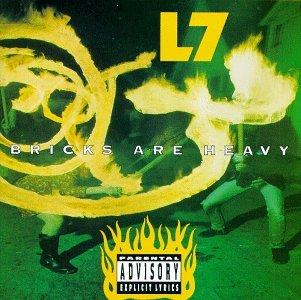 The beauty of grunge is that many of the bands of this era such as Pearl Jam and Nirvana fought alongside women for pro-choice and equal rights, not just for women, but also pioneered LGBTQ rights. Although L7 had released their self-titled debut album in 1988, it was their third album; Bricks Are Heavy, released in 1992 on Slash Records, which planted L7 firmly on the map. Aided by the huge single; Pretend We’re Dead, Bricks Are Heavy was an angry slice of grunge, although in hindsight, the record has more akin with punk than grunge, however, in the case of L7, many people will remember the band for Reading Festival 1992, when Donita Sparks launched her tampon into the crowd whilst bellowing: “eat my used tampon fuckers!” and in the same year, appearing on live British television show The Word, Sparks removed her jeans during Pretend We’re Dead revealing her naked bottom half. All this controversy certainly helped L7 to sell records and Bricks Are Heavy would become L7’s great accomplishment. On a rather different note regarding L7, Kurt Cobain would be introduced to a certain Courtney Love at an L7 concert, grunge now had a leading couple to find affinity with, their very own Sid and Nancy.
The beauty of grunge is that many of the bands of this era such as Pearl Jam and Nirvana fought alongside women for pro-choice and equal rights, not just for women, but also pioneered LGBTQ rights. Although L7 had released their self-titled debut album in 1988, it was their third album; Bricks Are Heavy, released in 1992 on Slash Records, which planted L7 firmly on the map. Aided by the huge single; Pretend We’re Dead, Bricks Are Heavy was an angry slice of grunge, although in hindsight, the record has more akin with punk than grunge, however, in the case of L7, many people will remember the band for Reading Festival 1992, when Donita Sparks launched her tampon into the crowd whilst bellowing: “eat my used tampon fuckers!” and in the same year, appearing on live British television show The Word, Sparks removed her jeans during Pretend We’re Dead revealing her naked bottom half. All this controversy certainly helped L7 to sell records and Bricks Are Heavy would become L7’s great accomplishment. On a rather different note regarding L7, Kurt Cobain would be introduced to a certain Courtney Love at an L7 concert, grunge now had a leading couple to find affinity with, their very own Sid and Nancy.
Courtney Love was a rising star in her own right, Hole had formed in Los Angeles in 1989 and released their raw debut album; Pretty on the Inside in 1991. However, Love’s profile would never be the same again, after officially meeting Cobain in 1991, the pair found mutual interests in music and of course, drugs. As with a lot of musical subcultures, drugs played a huge role in the grunge movement and in particular, heroin. Heroin had already claimed its first victim with Andrew Wood in 1990 and unfortunately, heroin would stalk the grunge movement like an unseen predator and become as synonymous with grunge as flannel shirts and torn jeans. Cobain and Love were married on February 24th 1992 in Hawaii and the newly-wed couple became parents to Frances Bean Cobain who was born on August 18th in the same year, but, for the Cobain’s, life would now be completely different. The press, tabloids and magazines would now be an active, invasive part of their life, with the press watching and scrutinising every move, Cobain would battle through with Nirvana’s profile rising to the biggest band in the world, Nirvana would pull off a successful headline slot at Reading Festival in this very year.
By late 1992, bands that were not strictly grunge were now being assimilated into the genre, with alternative bands such as Sonic Youth and The Lemonheads finding themselves with increased sales from the likes of Dirty and It’s A Shame About Ray. Because of this, it was getting further and further away from the sound which had originally come from Seattle in the mid to late 1980’s. Blind Melon from Los Angeles managed to unintentionally hitchhike into the wake of grunge with heavy rotation from their self-titled debut a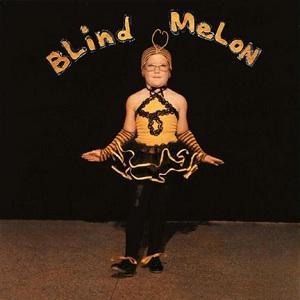 lbum which featured arty psychedelic grunge style music videos for I Wonder and Blind Melon’s breakthrough single No Rain, the former of which disappeared from MTV rotation with the release of No Rain. Unlike the large amounts of Pearl Jam style bands that were starting to come out of the woodwork, Blind Melon had a rather different edge, with the rather strange but soothing voice of Shannon Hoon whose high crooning voice sounded somewhere between Robert Plant and Neil Young, which gave Blind Melon a modern throwback feeling. Another band who was enjoying success on the back of the grunge movement was the Smashing Pumpkins. Although the band spent much of their career distancing themselves from the grunge label, Billy Corgan and co. cannot denounce the obvious impact that the music from Seattle has had on their record sales. The Smashing Pumpkin’s dreary, gloomy and smacked out sound was ripe for the picking from the disenfranchised Generation X with tracks such as Siva and Rhinoceros from their 1991 debut album; Gish. Yes, it’s true that the Smashing Pumpkins are far removed from you’re a-typical grunge band, however, they certainly facilitated themselves into the movement, from the fish eye lens photography of Gish to isolated, lucid dreaming music video of Rhinoceros and it wouldn’t be until a few years later where the Smashing Pumpkins would take their experimentation to a new level.
lbum which featured arty psychedelic grunge style music videos for I Wonder and Blind Melon’s breakthrough single No Rain, the former of which disappeared from MTV rotation with the release of No Rain. Unlike the large amounts of Pearl Jam style bands that were starting to come out of the woodwork, Blind Melon had a rather different edge, with the rather strange but soothing voice of Shannon Hoon whose high crooning voice sounded somewhere between Robert Plant and Neil Young, which gave Blind Melon a modern throwback feeling. Another band who was enjoying success on the back of the grunge movement was the Smashing Pumpkins. Although the band spent much of their career distancing themselves from the grunge label, Billy Corgan and co. cannot denounce the obvious impact that the music from Seattle has had on their record sales. The Smashing Pumpkin’s dreary, gloomy and smacked out sound was ripe for the picking from the disenfranchised Generation X with tracks such as Siva and Rhinoceros from their 1991 debut album; Gish. Yes, it’s true that the Smashing Pumpkins are far removed from you’re a-typical grunge band, however, they certainly facilitated themselves into the movement, from the fish eye lens photography of Gish to isolated, lucid dreaming music video of Rhinoceros and it wouldn’t be until a few years later where the Smashing Pumpkins would take their experimentation to a new level.
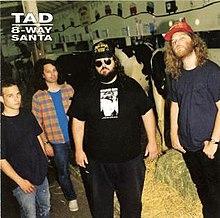 However, in the grand scheme of things, it wasn’t all roses, some of the bands that had worked really hard putting Seattle on the map were beginning to fall by the wayside, whether it was a conscious decision to keep their band small with integrity, a preference to push other bands from major labels or just pure unluckiness, some bands would be remain in high regard with a cult like status for the remainder of their careers or disappear completely from memory. Mudhoney signed with Reprise Records in 1991 and released their 3rd album, Piece of Cake in 1992 and gained the band some moderate success with the single Suck You Dry, but it wasn’t long before sales quickly waned. This same pattern can be seen for another one of Seattle’s early big players; Tad. Tad found success with Sub Pop Records with the release of 8-Way Santa in 1991, this earned Tad a meal ticket onto Warner Bros. Records, releasing Inhaler in 1993. Tad spent time touring with Soundgarden and gained critical acclaim for both 8-Way Santa and Inhaler, but unfortunately for Tad, their loyal fan base did not expand into success of their peers and Tad soon parted ways with Warner Bros. But for Screaming Trees, it would be a different story all together.
However, in the grand scheme of things, it wasn’t all roses, some of the bands that had worked really hard putting Seattle on the map were beginning to fall by the wayside, whether it was a conscious decision to keep their band small with integrity, a preference to push other bands from major labels or just pure unluckiness, some bands would be remain in high regard with a cult like status for the remainder of their careers or disappear completely from memory. Mudhoney signed with Reprise Records in 1991 and released their 3rd album, Piece of Cake in 1992 and gained the band some moderate success with the single Suck You Dry, but it wasn’t long before sales quickly waned. This same pattern can be seen for another one of Seattle’s early big players; Tad. Tad found success with Sub Pop Records with the release of 8-Way Santa in 1991, this earned Tad a meal ticket onto Warner Bros. Records, releasing Inhaler in 1993. Tad spent time touring with Soundgarden and gained critical acclaim for both 8-Way Santa and Inhaler, but unfortunately for Tad, their loyal fan base did not expand into success of their peers and Tad soon parted ways with Warner Bros. But for Screaming Trees, it would be a different story all together. 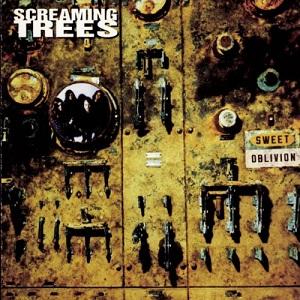 On the back of Uncle Anesthesia released in 1991, Screaming Trees would release Sweet Oblivion in 1992 and it would be the closest that Screaming Trees would come to a huge success, this was aided by Sweet Oblivion’s lead off single; Nearly Lost You being featured on the soundtrack to Singles in which Mark Lanegan’s sandpaper soaked in whiskey vocals delivered a song of loss, redemption and forgiveness in Lanegan’s bluesy unique style. However, personal problems and line-up changes would condemn Screaming Trees to be left behind and by the time Dust was released in 1996, the musical landscape would be completely different.
On the back of Uncle Anesthesia released in 1991, Screaming Trees would release Sweet Oblivion in 1992 and it would be the closest that Screaming Trees would come to a huge success, this was aided by Sweet Oblivion’s lead off single; Nearly Lost You being featured on the soundtrack to Singles in which Mark Lanegan’s sandpaper soaked in whiskey vocals delivered a song of loss, redemption and forgiveness in Lanegan’s bluesy unique style. However, personal problems and line-up changes would condemn Screaming Trees to be left behind and by the time Dust was released in 1996, the musical landscape would be completely different.
The world was painted plaid as grunge reached its pinnacle in 1992 and by mid-1993, grunge was now a million miles away from that muddy, punk sound of 1988. The corporate machine had taken Seattle’s poor, thrift store life and transformed it in dollars, grunge now had pin-up poster boys in the shape of Kurt Cobain, Chris Cornell and Eddie Vedder, as well as multi-million dollar music videos playing on MTV. Whether it was the mainstream success or a conscious decision made by the major label record companies, grunge had become a marketing tool, it was fast losing the integrity of its roots. By now, record companies were beginning to pick up the bands that they thought could shift huge amounts of records in a short space of time, one such band was Seattle’s Candlebox who signed to Warner Bros. Records in 1992 and released their eponymous debut album in 1993. Candlebox sold exceptionally well due to the singles Far Behind, Change, You and Cover Me, with Far Behind becoming one of the most requested music videos on MTV in 1993, but Candlebox could never quite shake off label of grunge bandwagon jumpers. The views of the major record companies attitude towards creating hits, not only caused a backlash from long-time fans in Washington, claiming that grunge had become stagnant, excessive and bloated, but as grunge continued to be watered down throughout the year, the bands themselves took matters into their own hands.
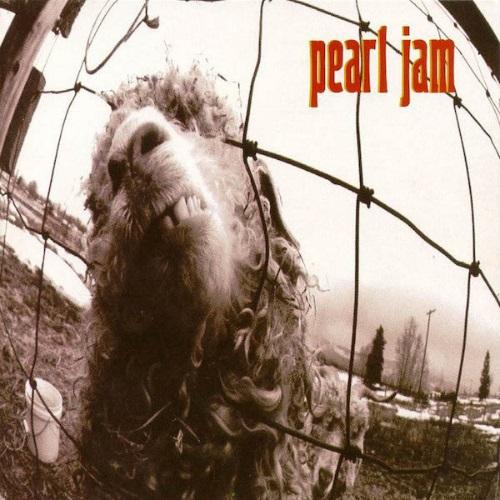 Pearl Jam had endlessly toured on the back of Ten and now Epic Records wanted a follow up. The band themselves had never been satisfied with the accessible, polished production of Ten, the band thought that Ten was overproduced and didn’t give an accurate representation of what Pearl Jam was actually about. Pearl Jam enlisted Brendan O’Brien to produce their second album; Vs. in comparison to their first album, Vs. is angrier and much more raw, with Pearl Jam shunning record company expectations. Vs. still had a huge commercial appeal and the singles; Go, Daughter, Animal and Dissident were carefully chosen, Daughter and Dissident could easily have fit in amongst Ten. Pearl Jam were no stranger to anger, Once, Why Go and State of Love and Trust showed that Pearl Jam had a grittier side to them, however, Go and Animal had a different sort of anger in them, this time the anger had a target and this theme runs through Vs., tracks such as the anti-gun anthem; Glorified G, the hypnotic tribal rhythms of institutional police racism of W.M.A., a direct attack on the media with Blood and an even angrier follow up to Why Go in the shape of Leash. Vs. was the point where Pearl Jam began to retreat away from the spotlight and as a collective unit, they did things on their terms and at this time, it meant that Pearl Jam would release no music videos for the singles of Vs. and this became a huge fuck you to the music industry. This did not stop Vs. from debuting at number 1 on the albums chart and receiving generally favourable critical reviews, but for Pearl Jam, they would continue their retreat away from the public eye.
Pearl Jam had endlessly toured on the back of Ten and now Epic Records wanted a follow up. The band themselves had never been satisfied with the accessible, polished production of Ten, the band thought that Ten was overproduced and didn’t give an accurate representation of what Pearl Jam was actually about. Pearl Jam enlisted Brendan O’Brien to produce their second album; Vs. in comparison to their first album, Vs. is angrier and much more raw, with Pearl Jam shunning record company expectations. Vs. still had a huge commercial appeal and the singles; Go, Daughter, Animal and Dissident were carefully chosen, Daughter and Dissident could easily have fit in amongst Ten. Pearl Jam were no stranger to anger, Once, Why Go and State of Love and Trust showed that Pearl Jam had a grittier side to them, however, Go and Animal had a different sort of anger in them, this time the anger had a target and this theme runs through Vs., tracks such as the anti-gun anthem; Glorified G, the hypnotic tribal rhythms of institutional police racism of W.M.A., a direct attack on the media with Blood and an even angrier follow up to Why Go in the shape of Leash. Vs. was the point where Pearl Jam began to retreat away from the spotlight and as a collective unit, they did things on their terms and at this time, it meant that Pearl Jam would release no music videos for the singles of Vs. and this became a huge fuck you to the music industry. This did not stop Vs. from debuting at number 1 on the albums chart and receiving generally favourable critical reviews, but for Pearl Jam, they would continue their retreat away from the public eye.
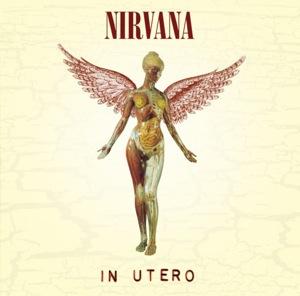 Nirvana also rebelled in their own way, with the huge runaway success of Nevermind and faced with the realism of the being the biggest band in the world, Nirvana would begin work on their third album; In Utero. For In Utero, Nirvana wanted to move away from the heavily polished sound that Butch Vig had given them for Nevermind and initially chose to work with Jack Endino again before Nirvana ultimately settled on the opinionated and take no shit attitude of Steve Albini. Albini was famous for working with underground bands and it was thought that he could break the Nevermind mould and give Nirvana the credibility back that the band had on Sub Pop. In Utero was a massive slab of raw energy interspersed with the record company pleasing singles; Heart Shaped Box, Rape Me and All Apologies. Although at the time, many people referred to In Utero as unlistenable, the record was eaten up by its target audience with the first single; Heart Shaped Box receiving a huge amount of airplay, mainly due to its extremely odd music video which featured an excessive amount of foetus’ hanging from trees, an emaciated elderly man in a Santa hat as Jesus Christ on the cross, being taunted by ravens in a field of poppies whilst a young girl dressed in a white dress is eventually dyed black. However, it was the much more raw songs on In Utero which interested people the most, songs such as; Scentless Apprentice, Milk It, Tourette’s and Radio Friendly Unit Shifter were chaotic and featured Cobain’s voice at its most scratchy, this became a wake-up call for those who were expecting something similar to Nevermind, leaving Geffen Records unsure as to what to do with In Utero. Cobain ultimately did not like the production that Albini had provided and felt that the drums and bass were far too low in the mix. Cobain requested that Albini alter this and remix this part, to which Albini declined and from here, Nirvana chose to work with R.E.M. producer Scott Litt who remixed Heart Shaped Box, All Apologies and Pennyroyal Tea, the latter of which was pulled, but eventually released on the Nirvana album in 2002. In support of In Utero, Nirvana set out on a world tour that was never destined to be completed.
Nirvana also rebelled in their own way, with the huge runaway success of Nevermind and faced with the realism of the being the biggest band in the world, Nirvana would begin work on their third album; In Utero. For In Utero, Nirvana wanted to move away from the heavily polished sound that Butch Vig had given them for Nevermind and initially chose to work with Jack Endino again before Nirvana ultimately settled on the opinionated and take no shit attitude of Steve Albini. Albini was famous for working with underground bands and it was thought that he could break the Nevermind mould and give Nirvana the credibility back that the band had on Sub Pop. In Utero was a massive slab of raw energy interspersed with the record company pleasing singles; Heart Shaped Box, Rape Me and All Apologies. Although at the time, many people referred to In Utero as unlistenable, the record was eaten up by its target audience with the first single; Heart Shaped Box receiving a huge amount of airplay, mainly due to its extremely odd music video which featured an excessive amount of foetus’ hanging from trees, an emaciated elderly man in a Santa hat as Jesus Christ on the cross, being taunted by ravens in a field of poppies whilst a young girl dressed in a white dress is eventually dyed black. However, it was the much more raw songs on In Utero which interested people the most, songs such as; Scentless Apprentice, Milk It, Tourette’s and Radio Friendly Unit Shifter were chaotic and featured Cobain’s voice at its most scratchy, this became a wake-up call for those who were expecting something similar to Nevermind, leaving Geffen Records unsure as to what to do with In Utero. Cobain ultimately did not like the production that Albini had provided and felt that the drums and bass were far too low in the mix. Cobain requested that Albini alter this and remix this part, to which Albini declined and from here, Nirvana chose to work with R.E.M. producer Scott Litt who remixed Heart Shaped Box, All Apologies and Pennyroyal Tea, the latter of which was pulled, but eventually released on the Nirvana album in 2002. In support of In Utero, Nirvana set out on a world tour that was never destined to be completed.
In 1993, Alice in Chains concluded their world tour for Dirt, they were tired, burnt out and to top it off, they had fired Mike Starr during the tour for heavy drug use, as well as finding themselves evicted due to not paying the rent. Ozzy Osbourne bassist, Mike Inez was brought in during the tour to replace Starr and has been a member of Alice in Chains ever since. Never intended as an actual release, Jar of Flies was released on the January 25th 1994 and once more shows the broad range of styles that Alice in Chains are able to pull together and just like Sap, Jar of Flies featured a focus on acoustic songs with Jerry Cantrell’s perfect highlighting using an electric guitar alongside the beautiful harmonies of Staley and Cantrell. Jar of Flies also broke records by being the first EP to debut at number 1 by containing the massive hits; I Stay Away and No Excuses, both of which ran heavily on MTV contributing to the sales for Jar of Flies, with the latter containing an ambiguous rising violin section which showcases how Alice in Chains had grown as songwriters over the course of professional career.
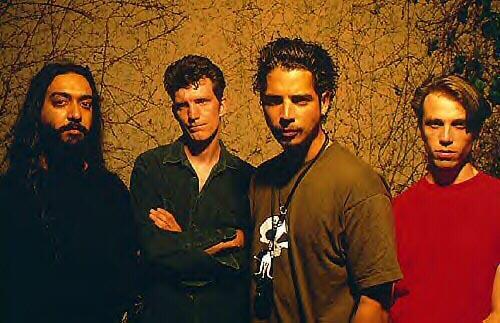 Just as 1991 had shaped up to be a pivotal year in the grunge timeline, then 1994 would be equally as pivotal and a change was in the air. On the 8th March 1994, Soundgarden returned for the first time since September 1991 with their most successful album to date; Superunknown. Superunknown featured a new look Cornell, gone was a long tousled hair and in was a short and spiky haircut in which a line could be drawn between the Soundgarden of the past and present. Superunknown still had the alternatively tuned guitars such as; Like Suicide, Head Down and Half, whilst the odd time signatures which made Soundgarden unique still being employed in My Wave, Limo Wreck and Spoonman. However, much of the grinding, loud avant-garde noise had all but completely disappeared with Superunknown proving a complete evolution point in Soundgarden’s writing process. There are however, glimpses of Soundgarden’s past, Let Me Drown and Mailman would easily fit in alongside previous Soundgarden albums, but for Superunknown, it was the singles; Spoonman, The Day I Tried to Live, Black Hole Sun, My Wave and Fell on Black Days which caused the album to chart at number 1 on the US Billboard 200, each single charted in the top 20 with the catchy Spoonman peaking at number 3. However, what sold Superunknown for Soundgarden was Black Hole Sun – a psychedelic ballad with a typical Soundgarden-esque odd time signature change in the breakdown. Black Hole Sun has one of the most iconic music videos of the 90’s featuring disturbing imagery, such as a man bathing with a dog and a young girl seductively eating ice cream. This is all set against a magic mushroom trip inducing sky until the climax of the song reaches an Armageddon tipping point. From here, it was clear that Soundgarden would never be the same again, Soundgarden had a large songbook with a band honed to their craft. Chris Cornell had that unique voice, the image and now a major number 1 hit behind them and if early 1994 proved anything, it was that it was now insanely difficult to pinpoint what exactly grunge was and with all the major players having developed their own sound and pulling it different directions it would become clear that it wasn’t a case of if grunge imploded, but a question of when.
Just as 1991 had shaped up to be a pivotal year in the grunge timeline, then 1994 would be equally as pivotal and a change was in the air. On the 8th March 1994, Soundgarden returned for the first time since September 1991 with their most successful album to date; Superunknown. Superunknown featured a new look Cornell, gone was a long tousled hair and in was a short and spiky haircut in which a line could be drawn between the Soundgarden of the past and present. Superunknown still had the alternatively tuned guitars such as; Like Suicide, Head Down and Half, whilst the odd time signatures which made Soundgarden unique still being employed in My Wave, Limo Wreck and Spoonman. However, much of the grinding, loud avant-garde noise had all but completely disappeared with Superunknown proving a complete evolution point in Soundgarden’s writing process. There are however, glimpses of Soundgarden’s past, Let Me Drown and Mailman would easily fit in alongside previous Soundgarden albums, but for Superunknown, it was the singles; Spoonman, The Day I Tried to Live, Black Hole Sun, My Wave and Fell on Black Days which caused the album to chart at number 1 on the US Billboard 200, each single charted in the top 20 with the catchy Spoonman peaking at number 3. However, what sold Superunknown for Soundgarden was Black Hole Sun – a psychedelic ballad with a typical Soundgarden-esque odd time signature change in the breakdown. Black Hole Sun has one of the most iconic music videos of the 90’s featuring disturbing imagery, such as a man bathing with a dog and a young girl seductively eating ice cream. This is all set against a magic mushroom trip inducing sky until the climax of the song reaches an Armageddon tipping point. From here, it was clear that Soundgarden would never be the same again, Soundgarden had a large songbook with a band honed to their craft. Chris Cornell had that unique voice, the image and now a major number 1 hit behind them and if early 1994 proved anything, it was that it was now insanely difficult to pinpoint what exactly grunge was and with all the major players having developed their own sound and pulling it different directions it would become clear that it wasn’t a case of if grunge imploded, but a question of when.
 By 1994, Kurt Cobain’s use of heroin was no secret and Cobain had been coaxed into rehab in 1992, however in July 1993, Cobain suffered his first heroin overdose, but Courtney Love was available to assist in bringing Cobain around through the use of naloxone, a pharmaceutical opioid blocker used in overdose cases. Always of poor health, Cobain had been a lifelong sufferer of chronic bronchitis and on 1st March 1994, Cobain was diagnosed with bronchitis as well as laryngitis and was flown from Munich to Rome so that treatment could take place. It was here in Rome on the 3rd March that Cobain attempted to take his own life through a combination of champagne and Rohypnol and once more after medical attention, Cobain was allowed to fly home to Seattle. During the In Utero tour onwards, Cobain’s behaviour had been erratic at best and once again, Love had to get the authorities involved when on 18th March, Cobain was extremely suicide and had locked himself in a room with a gun. Following the police calming this situation down, on the back of an intervention, Cobain agreed to go to rehab once more and on March 30th, Cobain checked into rehab in Los Angeles. This would be the last time that Cobain would attend rehab, that evening, Cobain would scale a 6ft wall surrounding the facility and caught a plane home to Seattle. After disappearing from public view Cobain was found dead at his home on April 8th from a self-inflicted shotgun wound, it was discovered during the autopsy that Cobain had commit suicide on April 5th. Following the death of Cobain, not just the grunge world, but the music world over held a huge outpouring of grief as the death of Kurt Cobain removed any momentum that the grunge movement had left. As the curtain began to fall on grunge, the movement that had rocketed out of Seattle in 1991 now began to limp, desperately trying to find somewhere to lay down and die. The record companies would take the grunge moniker and twist it further to meet their own needs of a changing world, whilst the bands which rode the crest of the wave in 1991 would struggle to find their place in a post-grunge world.
By 1994, Kurt Cobain’s use of heroin was no secret and Cobain had been coaxed into rehab in 1992, however in July 1993, Cobain suffered his first heroin overdose, but Courtney Love was available to assist in bringing Cobain around through the use of naloxone, a pharmaceutical opioid blocker used in overdose cases. Always of poor health, Cobain had been a lifelong sufferer of chronic bronchitis and on 1st March 1994, Cobain was diagnosed with bronchitis as well as laryngitis and was flown from Munich to Rome so that treatment could take place. It was here in Rome on the 3rd March that Cobain attempted to take his own life through a combination of champagne and Rohypnol and once more after medical attention, Cobain was allowed to fly home to Seattle. During the In Utero tour onwards, Cobain’s behaviour had been erratic at best and once again, Love had to get the authorities involved when on 18th March, Cobain was extremely suicide and had locked himself in a room with a gun. Following the police calming this situation down, on the back of an intervention, Cobain agreed to go to rehab once more and on March 30th, Cobain checked into rehab in Los Angeles. This would be the last time that Cobain would attend rehab, that evening, Cobain would scale a 6ft wall surrounding the facility and caught a plane home to Seattle. After disappearing from public view Cobain was found dead at his home on April 8th from a self-inflicted shotgun wound, it was discovered during the autopsy that Cobain had commit suicide on April 5th. Following the death of Cobain, not just the grunge world, but the music world over held a huge outpouring of grief as the death of Kurt Cobain removed any momentum that the grunge movement had left. As the curtain began to fall on grunge, the movement that had rocketed out of Seattle in 1991 now began to limp, desperately trying to find somewhere to lay down and die. The record companies would take the grunge moniker and twist it further to meet their own needs of a changing world, whilst the bands which rode the crest of the wave in 1991 would struggle to find their place in a post-grunge world.
Next month, we look at the impact that grunge had on the world and the fallout that was left behind, through its darkest days of the late 1990’s and early 2000’s, to the bands metamorphosis from young men full of angst and anger, to the elder statesmen of rock and metal, whilst also taking a peek at those bands influenced by this movement and making loud, muddy, grungy sounds themselves.
Adam McCann / MHF Magazine

